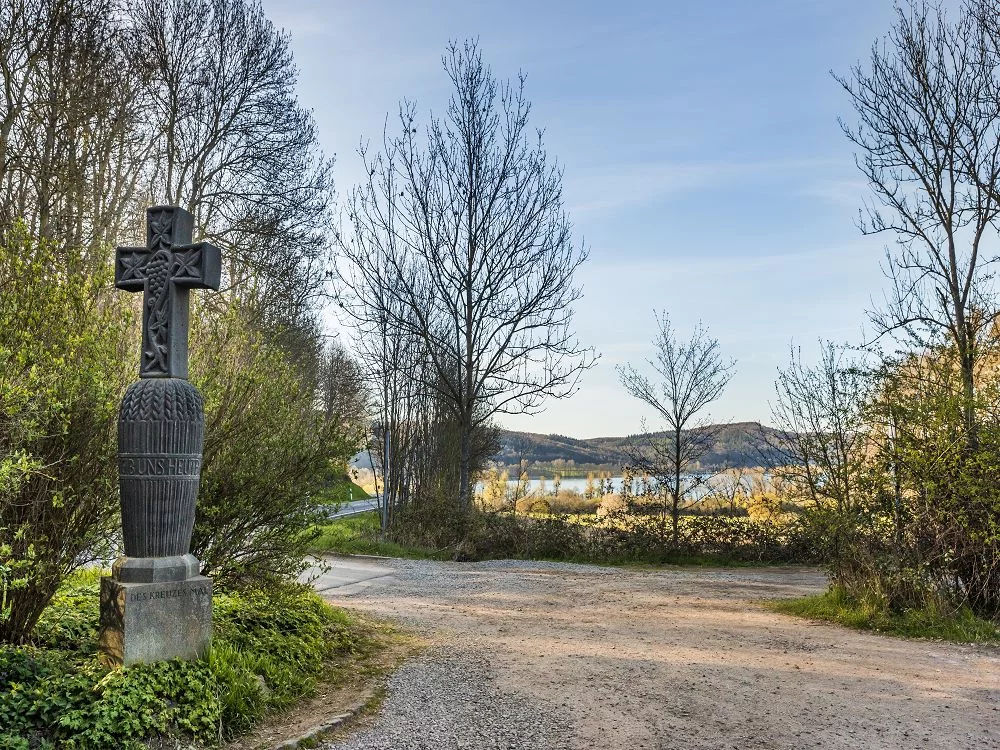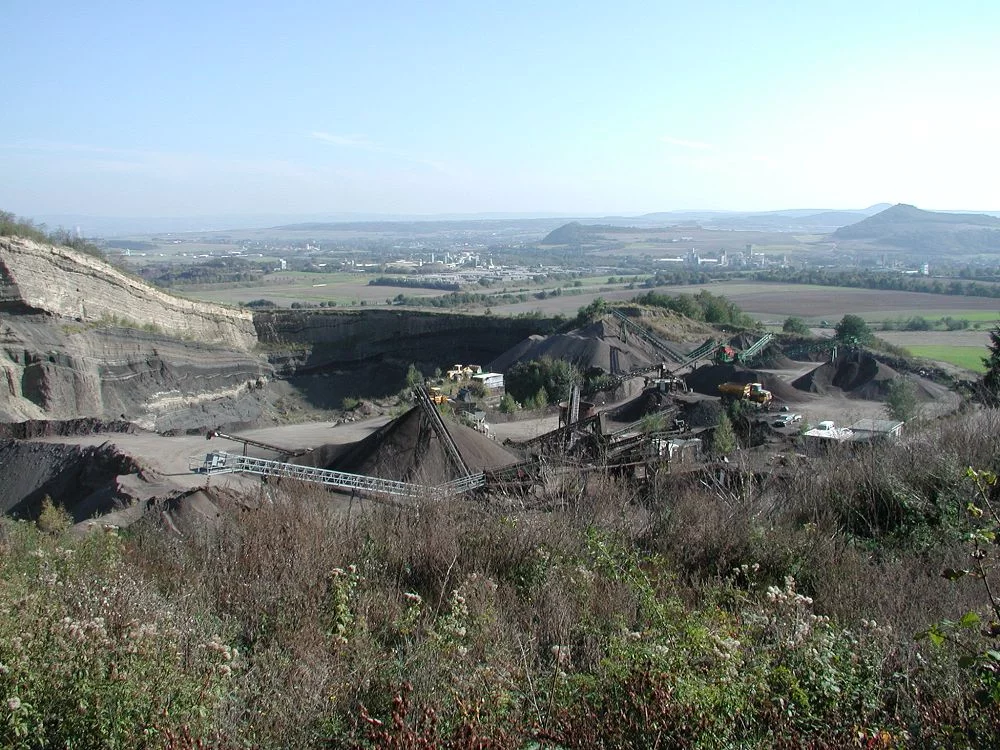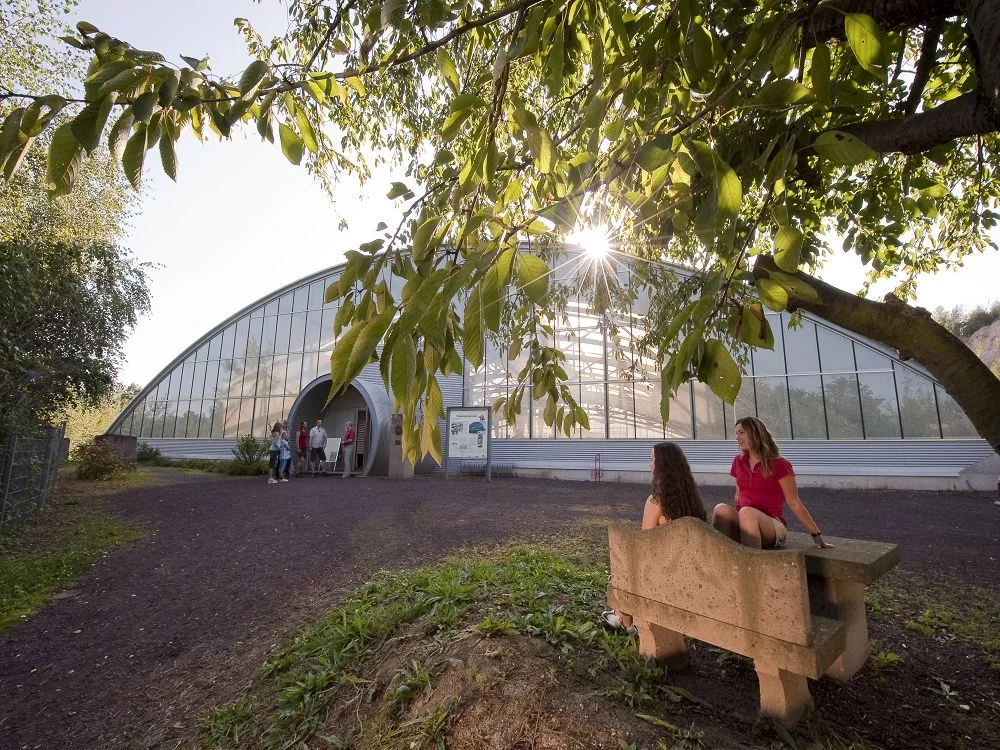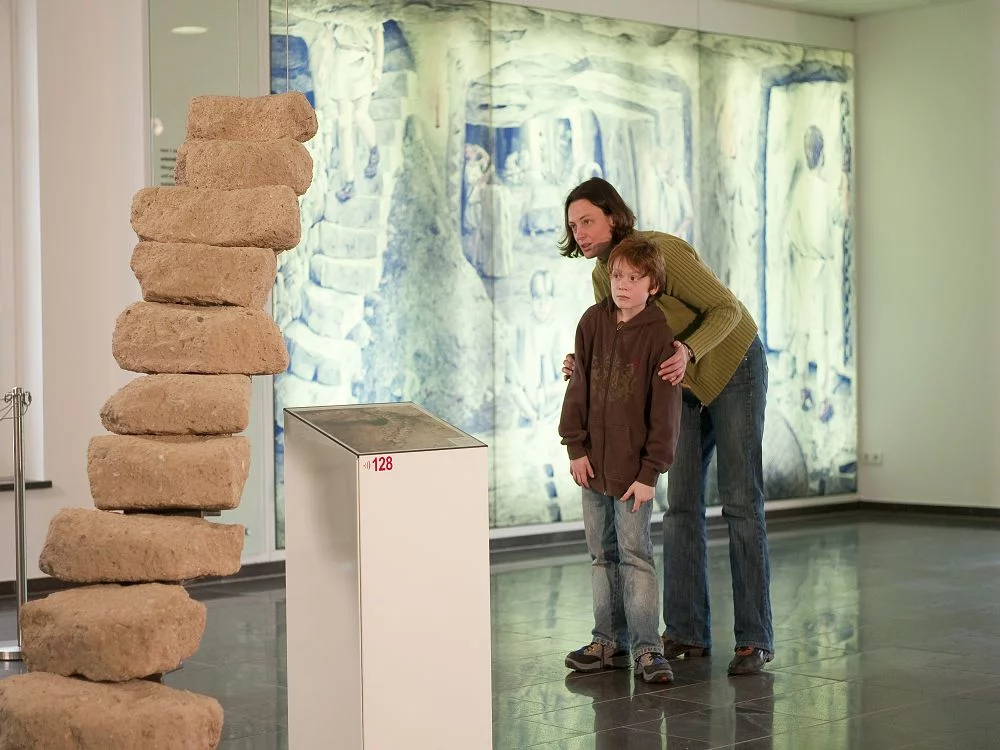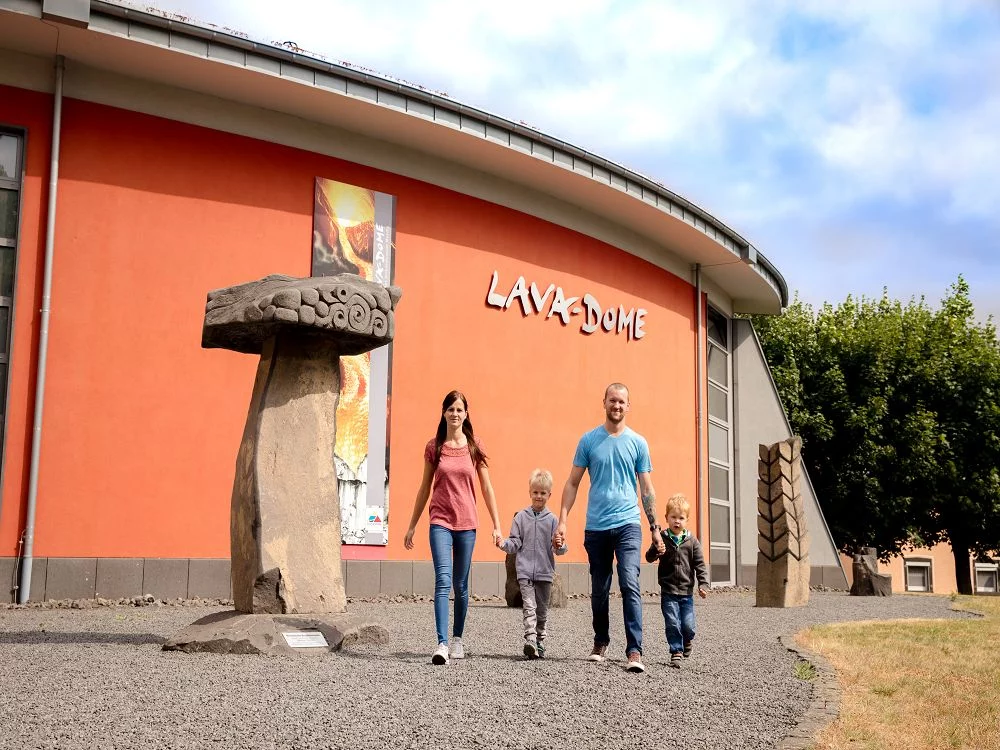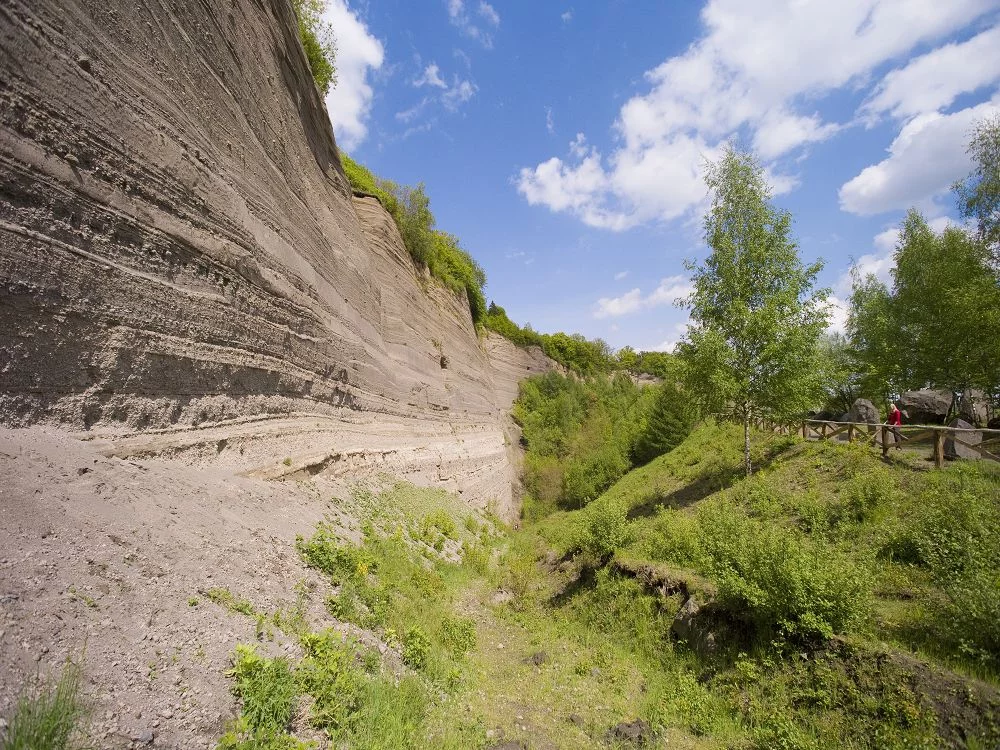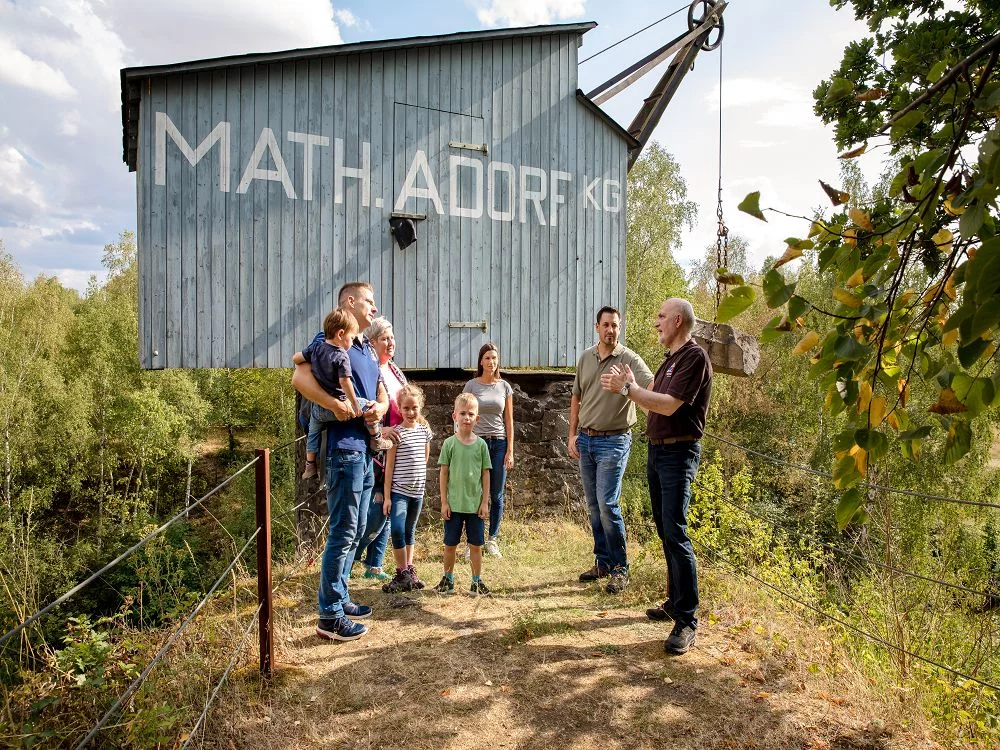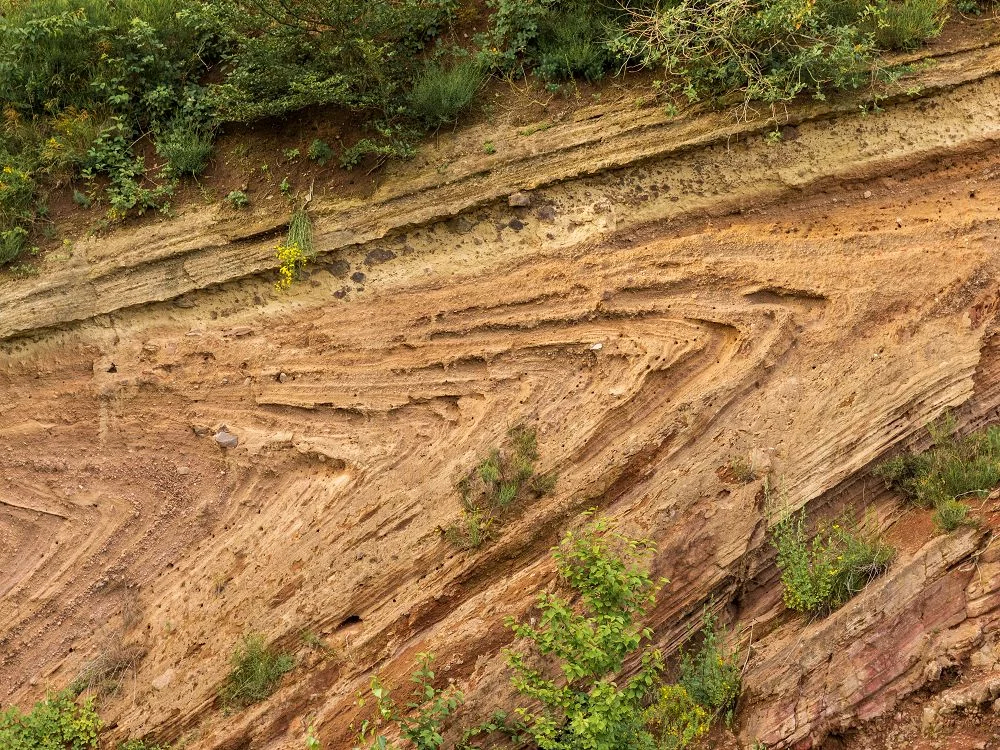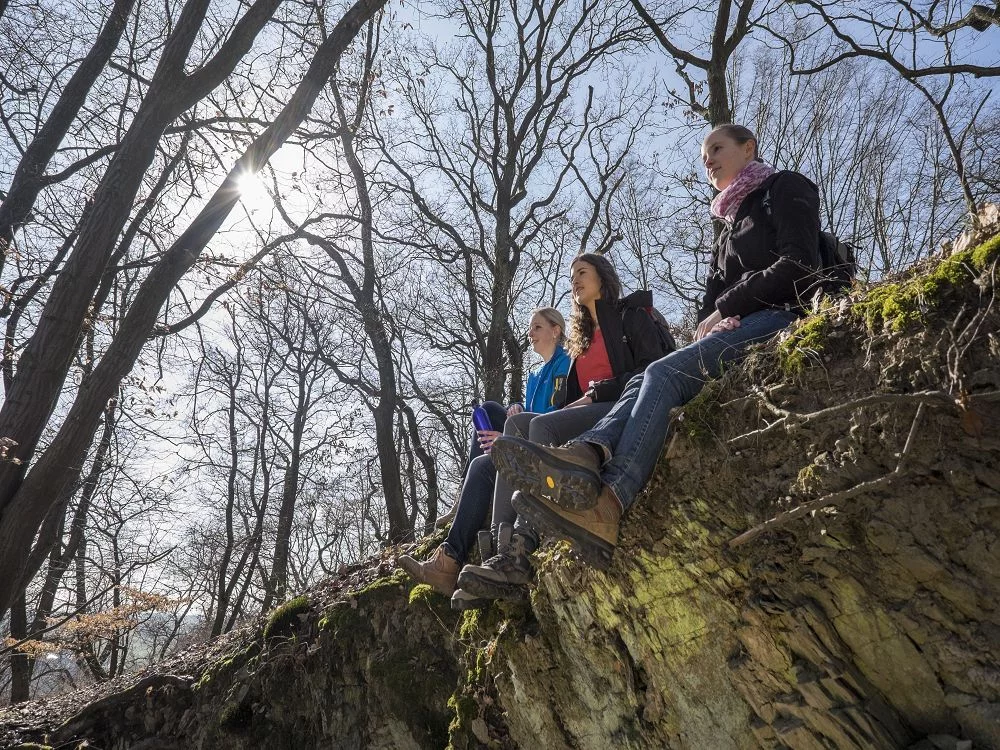The history of the Mayen mine field begins with the eruption of the Bellerberg volcano around 200,000 years ago. In the course of the eruption, the flanks of the cinder cone broke open in several places, resulting in the formation of three lava flows. The lava flow flowing out in a southerly direction cooled and created the Mayen pit field, one of the oldest and most important mining areas for basalt lava due to its long history.
The use of basalt as a raw material began around 7,000 years ago. Celts made so-called Napoleon's hats from the raw material, i.e. grating stones for grinding grain. 2,000 years ago, Julius Caesar recognized how valuable Mayen basalt was for the production of high-quality millstones. Basalt was quarried in the Mayen mine field for centuries until the 1950s. This is why there are traces of Roman quarrying right next to an electric crane from the 20th century.
A circular trail of approx. 2 km in length leads through the mining landscape, past the idyllic Silbersee lake and down into the cooled lava flow of the Bellerberg volcano with its bizarre pillar formations. More than 50 illustrated information boards tell the story of the mining area. Access to the Mayen mine field is via the (free) Terra Vulcania information area.
Do not let this deter you from visiting the site! The mine site can be visited without restriction and free of charge! Nevertheless, a visit to the paid exhibition part of Terra Vulcania is highly recommended. Under the title “SteinZeiten”, everything here revolves around the history of basalt mining in the Eifel town of Mayen. Test your strength and find out how hard the work of the layers was. You should allow at least 1 hour for your walk through the Mayen mining field.
ADDRESS/APPROACH
You will find the entrance to the Mayener Grubenfeld at An den Mühlsteinen 7, 56727 Mayen.

